A skateboard deck is more than just a piece of pressed wood. Width, concave and other details make it special. If you want to build your own skateboard or get a complete, our guide spells everything out for you.
Which type of skateboard for me?
Before you start to look for a new deck, you should get to know the different styles of skateboarding.
Styles
Best for tricks
Street skating is all about tricks on the street or in the skate park. Rails, boxes, ramps or stairs - everything is jumped on or over.
These "newschool skateboards" with the popsicle shape are best suited for this. These skateboards are narrower and lighter, which is better for ollies and flips. The double-sided kicktail allows you to skate in both directions.
Street and park skateboarding with Blue Tomato
Back to the roots!
Bowls and pools have a long and rich history in skating. Back in the day, the first skaters drained Californian pools and shredded them. Later, the pools were replaced by professional halfpipes and ramps and new tricks such as high aerials and big spins emerged. This further development is called Vert (vertical) skateboarding.
For the steeper walls of a bowl or halfpipe, wider decks with a low concave are best. They provide more stability and a flat surface for your feet.
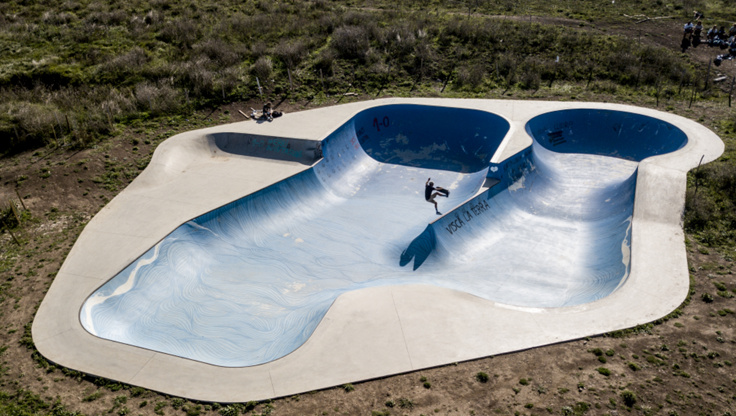
Riding a bowl
Transport and fun
Cruisers have a wider deck with only one kicktail. They are best for riding through town because they are easy to turn and versatile. Read our cruiser buyer's guide for more information.

Speed and long distance
Downhill riding, straight and long distances are where longboards shine. They can have a symmetrical shape with a low centre of gravity. You can use large wheels because longboards have cut-outs to accommodate them. We have a longboard buyer's guide for this different sport.
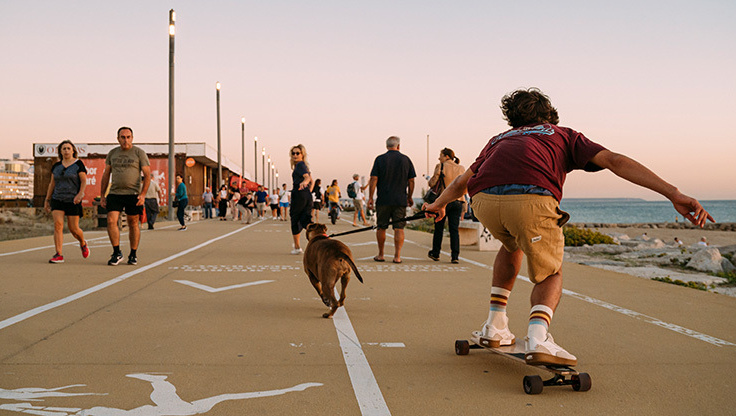
Complete Setup vs Self-assembled Skateboard?
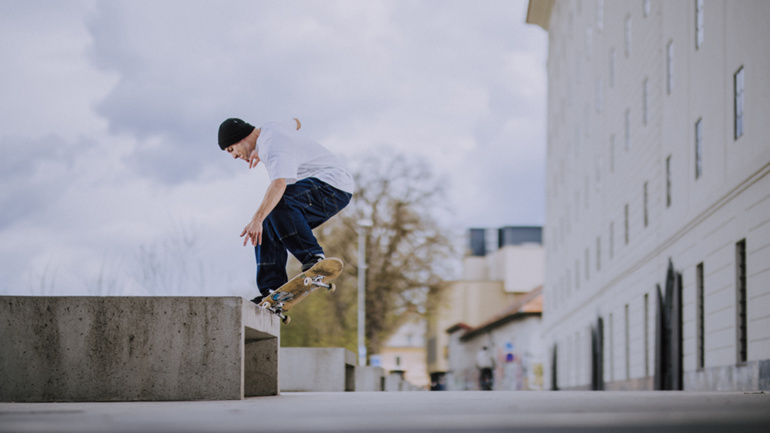
The biggest choice you can make when you're buying a skateboard is: should you buy a ready-assembled setup or build your own board from scratch.
vs DIY
Convenience and value
When you start skating you should consider getting a complete skateboard. They come ready to shred out of the box - no adjustment needed. These setups are ready-made – trucks, wheels, bearings and griptape are pre-assembled. A complete setup is easier on the wallet and is a hassle-free introduction to skating for beginners.
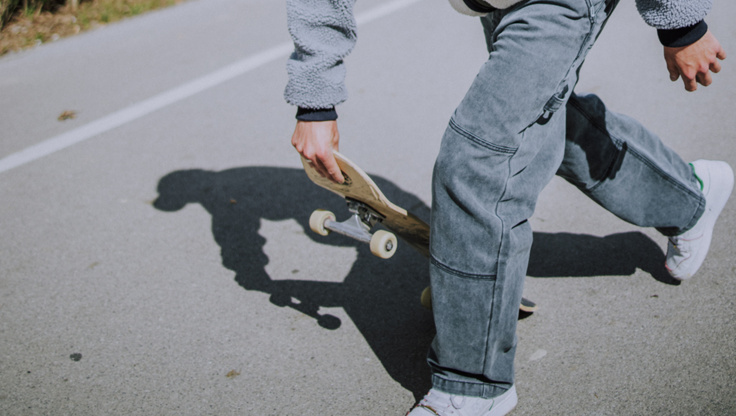
Freedom to choose
When you create your board from scratch, that is exactly what it is, your own board. You have the freedom to choose every component to suit your needs. You start with the deck of with the right width for your body then pair it with trucks, wheels and bearings that suit your style. Advanced skaters love to make their own setup as every part fits their personal needs.
What do I need for my custom skateboard setup?
Deck
The skateboard deck is the platform that everything else is mounted to. Find the right size and built up from there.
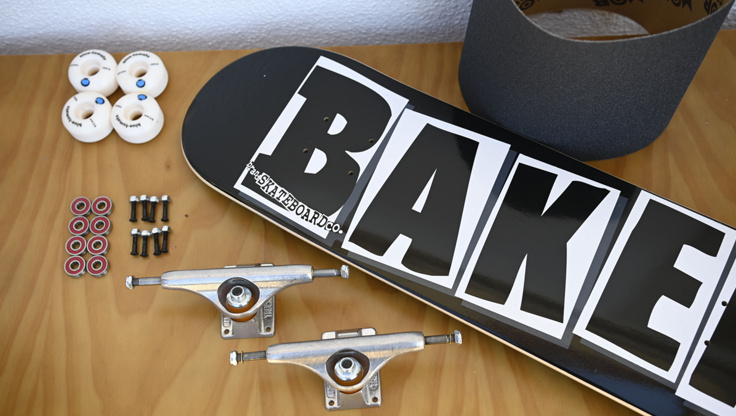
Trucks
Skateboard trucks should match the width of your deck. Higher trucks give you the best pop for ollie power. Low trucks are the most stable for street skating.
Find out more in our skateboard trucks buyer's guide.
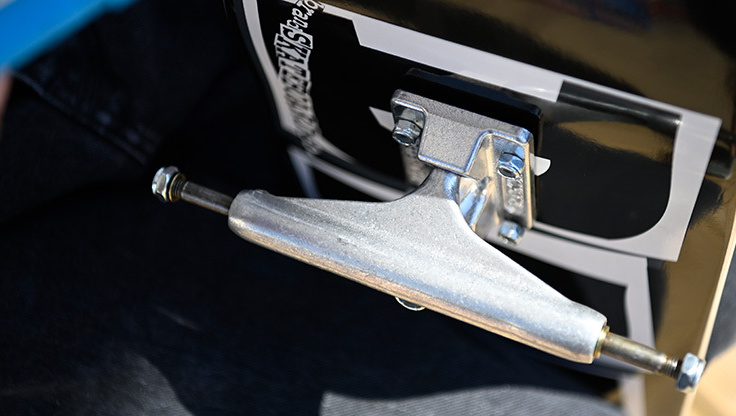
Wheels
Your wheels determine how you skate. Smaller wheels accelerate quickly and are lightweight for street skating. Larger wheels are more stable for cruising and longboarding.
Find out more in our skateboard wheels and bearings buyer's guide.
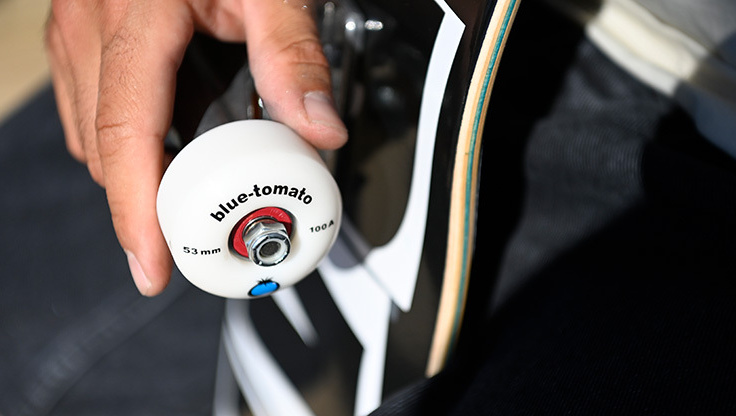
Bearings
Bearings are the connection between your wheels and your trucks. They keep your skateboard running smoothly.
All skate bearings are the same size. They fit with all skateboard and longboard wheels.
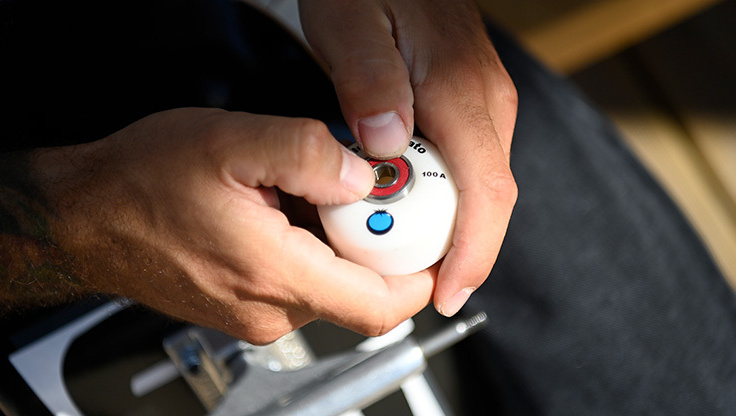
Hardware
Skateboard hardware includes the nuts and bolts which hold the trucks to the deck. If you add optional riser pads, then you might need a longer hardware set.
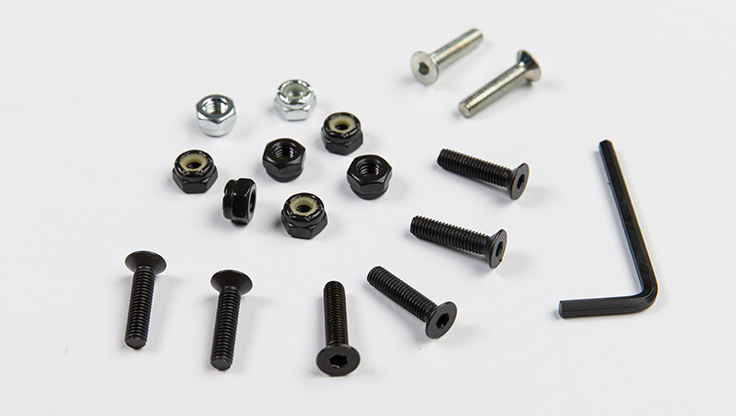
I always have my skate tool, a second set of bearings and hardware in my backpack. This way, I’m secure whatever happens. If something breaks or needs adjusting, my day isn’t over.
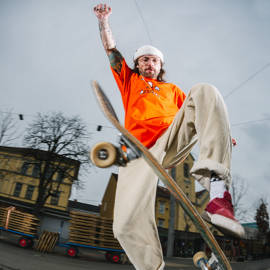
Griptape
Griptape is glued to the top of your deck and it helps you do your tricks.
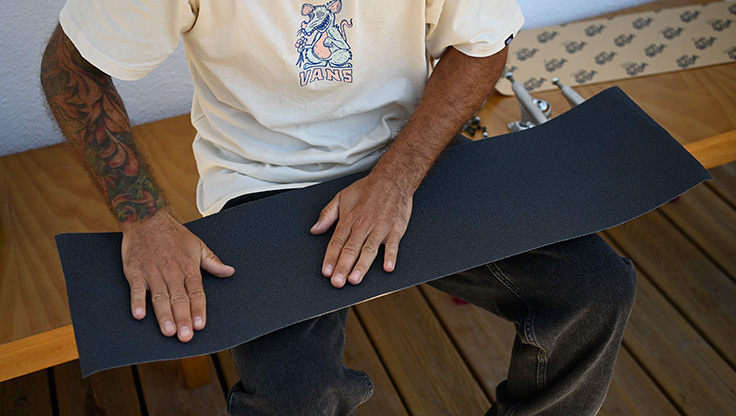
To stick a new griptape to my deck without any air bubbles, I press it down with the protective foil that came attached to the tape originally. This way, I can securely stick my tape on, without sanding my hands.

Which size deck for me?
When you look for a skateboard deck, width is the most important factor. It is measured in inches and always appears in the product name and on the board. The right size of board for you will depend on your height, your shoe size and what terrain you want to ride.
Generally speaking, narrower widths are better for smaller riders, women and kids. If you are taller, heavier or have larger feet a wider deck will be more stable for you.
main widths
Kids' skateboards
The narrowest skateboards - up to 7.75" - are reserved for your little ones. A narrower board is easier for a child to control with their smaller feet. The smaller dimensions make the board lighter, easier to flip and cheaper for you!
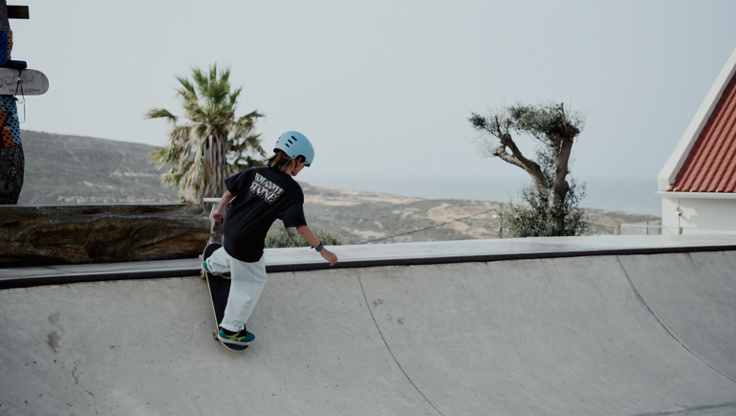
Kids' skateboard
Street and skate parks
Skateboard decks between 7.75” and 8.25” are great for street and park skateboarding. If you have smaller feet, are shorter or lighter weight, a narrower deck will also be easier to flip and do tricks with.
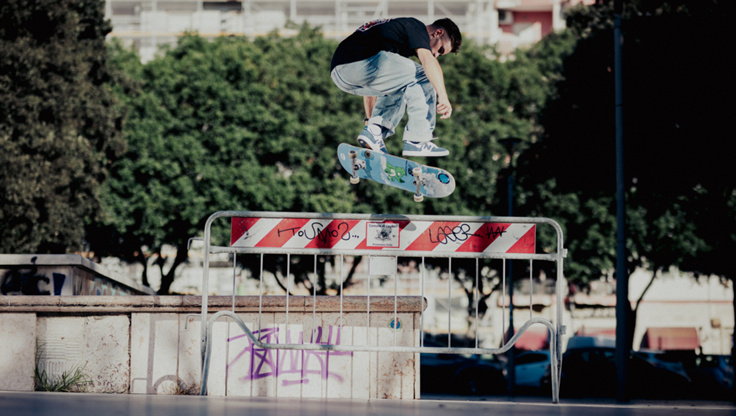
Good all-rounder skateboards
Decks between 8.25” and 8.5” are good for park and mini-ramp sessions. The most versatile option, comfortable everywhere. If you are looking for an all-rounder, look no further.
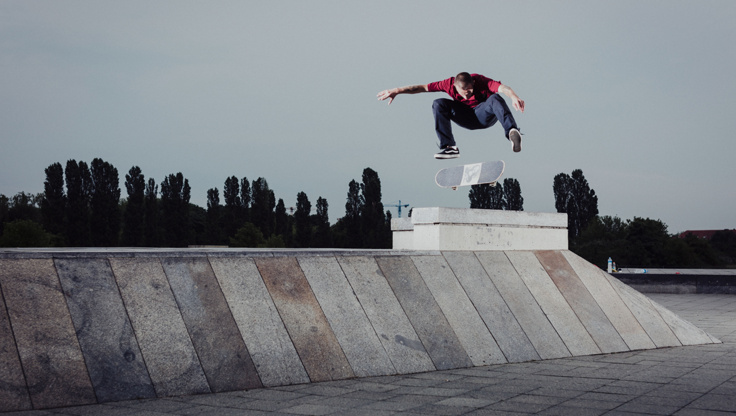
Halfpipe, pool and cruising
Boards over 8.5” are a stable, balanced platform for your feet. This makes them perfect for mini ramps, half-pipes and riding bowls. The added stability is great for cruising. If you have larger shoes (44 and upwards) or are taller than 1.85 cm you might want to consider going a bit wider.

Julia Brückler skateboarding on a floating miniramp
Which skateboard concave is the best for me?
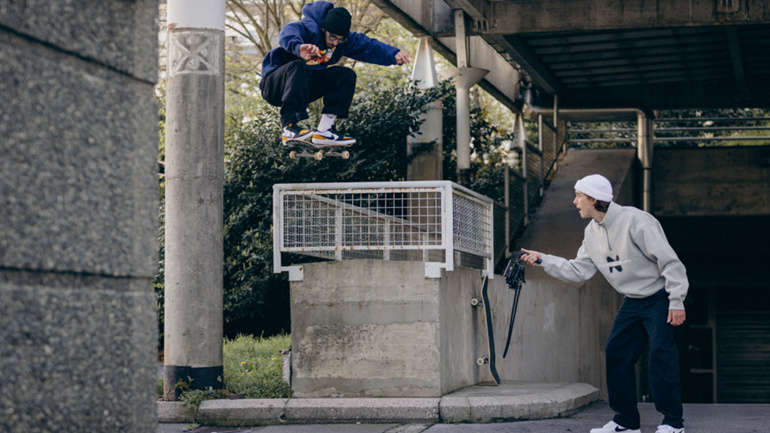
If you look at a deck from the side, you can see a curve between the edges - this is the concave of the board. It affects how your feet stand on the deck and the performance of your skateboard. Broadly there are three different height concaves.
Concaves
Stability for bowls, mini ramp and vert
A low concave is better in the halfpipe, mini-ramp and for pool riding. It has the most stability for riding big features such the halfpipe or cruising.
'Just right'
A medium concave is 'just right' for a lot of riders. It is still easy to flip but has stability for riding mini ramp and vert.
Great for flips
A high concave is the most aggressive curve between the two edges. It is easier to exert pressure on the edges, making technical flip tricks easier.
Which details should I look for in a deck?
Decks can have a long list of features and tech. Here we break down the most important details so you know which part is which and what to look for in a deck.
your features
The length of the board
Skateboards are from nose to tail between 28” and 33” long. Wider skateboards are also longer. Remember, your selection of deck should really be on width rather than length.
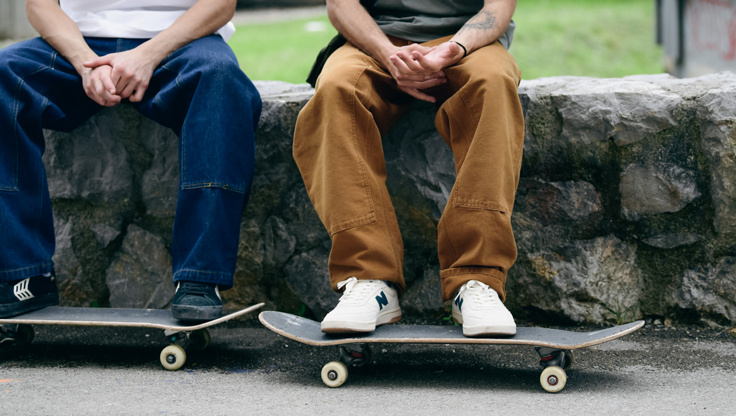
The distance between the trucks
The distance between the mounting holes for the trucks. The wheelbase determines how far your trucks and your wheels sit apart.

Kicktail - the pop of your board
The kicktail, the upturned end of your skateboard, allows you to do tricks like of ollies and kickflips. Most decks have one on both sides making it possible to do nollies and other switch tricks.
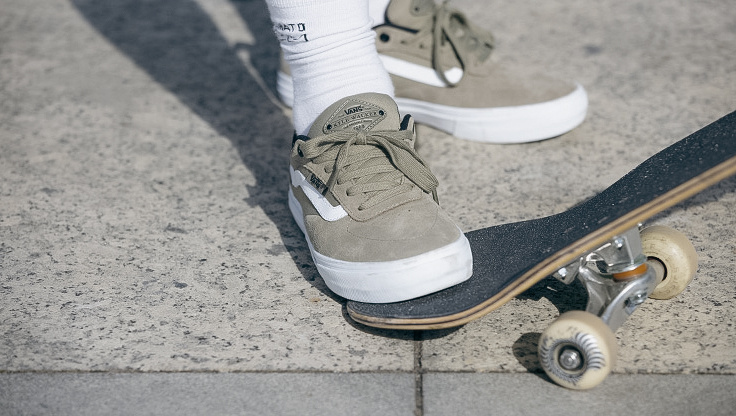
The ends of your deck
The nose is the front and the tail is the backside of your board. Finding it difficult to differentiate between the two? In most skateboards, the tail is slightly less pronounced than the nose.
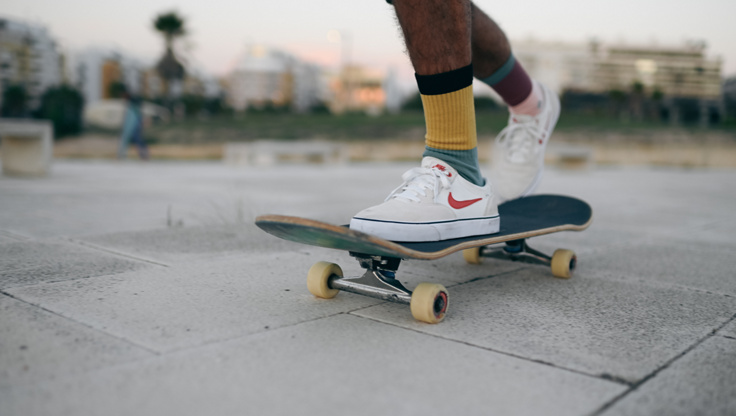
Skateboard deck construction
Any skateboard typically consists of seven layers of wood which are pressed together with a resin adhesive. The most common wood used is maple which is very hard yet light. More premium constructions add carbon fibre or other laminates for even more strength without excess weight.



